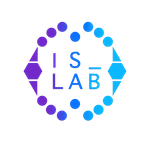E. Kontopoulos, N. Bassiliades, G. Antoniou, “Visualizing Defeasible Logic Rules for the Semantic Web”, 1st Asian Semantic Web Conference (ASWC'06), Springer-Verlag, LNCS 4185, pp. 278-292, Beijing, China, 3-7 September, 2006.
Author(s): E. Kontopoulos, Nick Bassiliades, G. Antoniou
Keywords: visualization, defeasible logic, RDF, stratification.
Tags:
Abstract: Defeasible reasoning is a rule-based approach for efficient reasoning with incomplete and conflicting information. Such reasoning is useful in many Semantic Web applications, like policies, business rules, brokering, bargaining and agent negotiations. Nevertheless, defeasible logic is based on solid mathe-matical formulations and is, thus, not fully comprehensible by end users, who often need graphical trace and explanation mechanisms for the derived conclu-sions. Directed graphs can assist in confronting this drawback. They are a pow-erful and flexible tool of information visualization, offering a convenient and comprehensible way of representing relationships between entities. Their appli-cability, however, is balanced by the fact that it is difficult to associate data of a variety of types with the nodes and the arcs in the graph. In this paper we try to utilize digraphs in the graphical representation of defeasible rules, by exploiting the expressiveness and comprehensibility they offer, but also trying to leverage their major disadvantage, by defining two distinct node types, for rules and atomic formulas, and four distinct connection types for each rule type in defea-sible logic and for superiority relationships. The paper also briefly presents a tool that implements this representation methodology.
